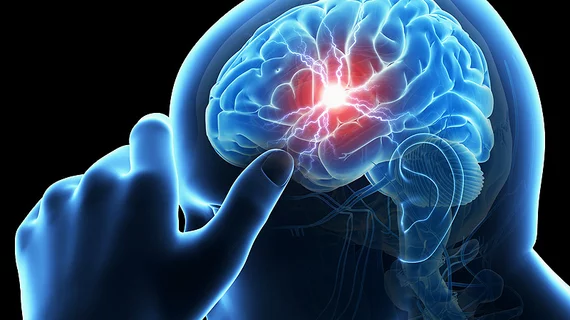Yet another key way AI could improve stroke care
Stroke care is one of the fields where AI research has made its biggest impact in recent years, and a new study published in Radiology focused on yet another way this evolving technology can make a difference. According to the work of an international team of researchers—the group includes representatives from Canada, South Korea and Switzerland—deep learning and machine learning can be used to identify infarcted brain tissue in non-contrast CT scans of patients with acute ischemic stroke (AIS).
Detecting infarction is vital to the treatment of AIS patients, providing key context that can convey whether or not thrombolysis or thrombectomy procedures are likely to work, but assessing infarction in non-contrast CT images can be a difficult task.
“Quantitative estimation of infarction with non–contrast-enhanced CT is challenging because the density and texture variations in the involved brain regions are subtle and can be confounded by normal physiologic changes or old lesions,” wrote author Wu Qiu, University of Calgary, and colleagues. “Low signal-to-noise ratio, thick slices, and low contrast in images of brain tissue make most traditional image-based segmentation approaches difficult.”
The team developed a hybrid AI model, “incorporating a deep learning-based feature into a machine learning framework,” by exploring non-contrast CT images from 157 AIS patients who received treatment from May 2004 to June 2009. Diffusion-weighted MRI scans of those same patients were used as a reference standard. A testing dataset was built using data from another 100 patients who underwent non-contrast CT scans and diffusion-weighted MRI scans.
Overall, the authors found that the AI-detected lesion volume “correlated with the reference standard of expert-contoured lesion volume.” The mean difference between AI-segmented volume and diffusion-weighted MRI volume was 11 mL.
“Methods like the one proposed here could help delineate and quantitate infarction from baseline non–contrast-enhanced CT images in patients with AIS, thereby helping physicians make clinical decisions,” the authors wrote.
The researchers did note that there were certain limitations to their research. For example, deep learning algorithms “provide only approximations of a brain infarction and do not truly detect it.” Also, they added, data from additional facilities is needed for additional validation and the technique needs to be sped up so that it can realistically be used in a clinical setting.

